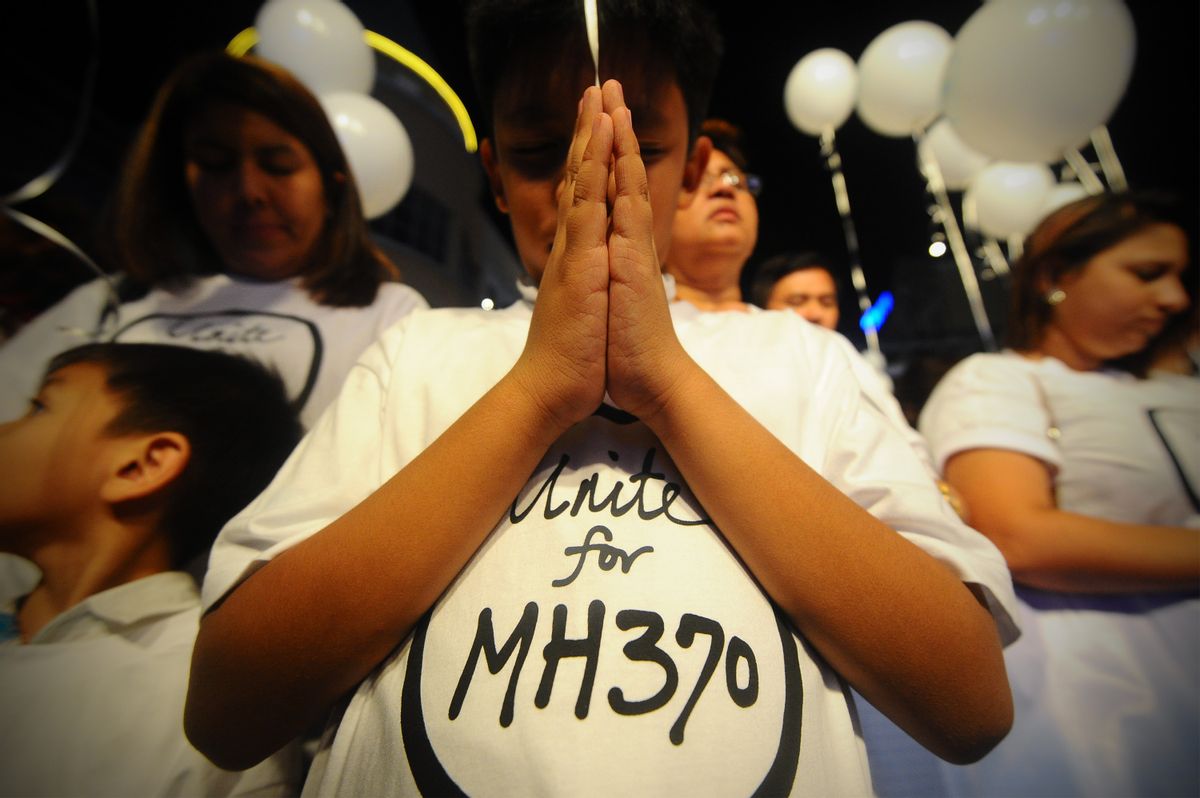This morning the New York Times is reporting that the search and rescue team from Australia is narrowing the area for its search in half. The team is currently searching the southern Indian Ocean. The reason behind the reduced search area, according to the Times, was, "data analysis of the plane’s likely fuel consumption." This comes shortly after the USS Kidd ended its search for the plane in the Straight of Malacca, after it was rushed there last week.
In the same article it was reported that Malaysian officials are combing through logs from a flight simulator that belonged to the pilot, 53-year-old Zaharie Ahmad Shah. According to the Times, data from Feb. 3 is missing.
According to BBC, this morning relatives of passengers aboard the missing flight were removed from a press conference in Kuala Lumpur. The relatives were trying to speak to journalists before the press conference began. Video from the press conference is below:
It has now been 12 days since Malaysia Airlines Flight 370 disappeared from radar and failed to land in Beijing, China. The ever-churning news cycle has tossed about so much information and so many theories, it can be difficult to parse. Skipping the conspiracy theories for now, this is what we know:
- The Boeing 777 plane took off at 12:41 AM from Kuala Lumpur, Malaysia, and was bound for Beijing, China. It had 227 passengers and a flight crew of 12.
- At 1:07 a.m. the plane sent an ACARS (Aircraft Communications Addressing and Reporting System) transmission. Its next transmission was due to come in at 1:37 a.m. That transmission does not come in. According to the Daily Beast, "These reports are short and compact bursts of data—in both text and code—transmitted to commercial data service centers on the ground." The transmissions also go to Boeing and Rolls-Royce (the engine maker) and engineers can send data back up to the plane.
- The last message to ground control, from the 27-year-old copilot Fariq Abdul Hamid, was, "All right, good night." According to the Daily Beast, the Malaysian government originally reported the time of this communication to be 1:30 a.m., when the plane left Malaysian airspace. It is now reporting that the ground control message came in at 1:19 a.m. This removes a great deal of intrigue because ...
- According to the New York Times, at 1:21 a.m., the transponders went dark. They were either turned off or failed. If the ground control message came in at 1:30 a.m., not 1:19, that would be a strange inconsistency. For now, though, the correct time, reported by the Times, is 1:19 a.m.
- Nearly an hour later at 2:15 a.m. military radar picks up an unidentified plane. According to the New York Times, investigators are concluding that this was Flight 370 off course and heading westward over the Indian Ocean. Other irregularities were also detected. The radar showed that it flew to an unsafe elevation for 777 aircraft, 45,000 feet, and then dropped back down and hovered at 23,000 feet.
- At 8:11 a.m., after failing to land in Beijing at 6:30 a.m., the plane sent its last automated satellite transmission.
- Four days ago, on March 15, Malaysian officials reported that a computer was used to reroute the plane west. It turned the search into a criminal investigation, according to the Times.
In the information age, where almost everything is Google-able, crowdsourced, or otherwise trackable, it is maddening that somehow an entire plane, not to mention 239 people, are missing. Many are filling in gaps with their own theories.
- There is a widely circulated, simple theory, from a Canadian pilot, that stated that there was an electrical fire. The theory was so sound that Wired reprinted it from Google+ where Chris Goodfellow originally posted it.
- Much has been made of the pilot, Zaharie Ahmad Shah, who is a veteran pilot. And though some may find the intrusion irksome, Mother Jones combed and translated his Facebook posts.
- New York magazine has compiled five of the most sane theories of what could have happened to the flight.
- And over at Slate they're pondering why none of the passengers phoned home.
- Previously, two passengers from Iran who used stolen passports to board the plane were being scrutinized. It is assumed they were seeking asylum.
h/t New York Times, the Daily Beast



Shares